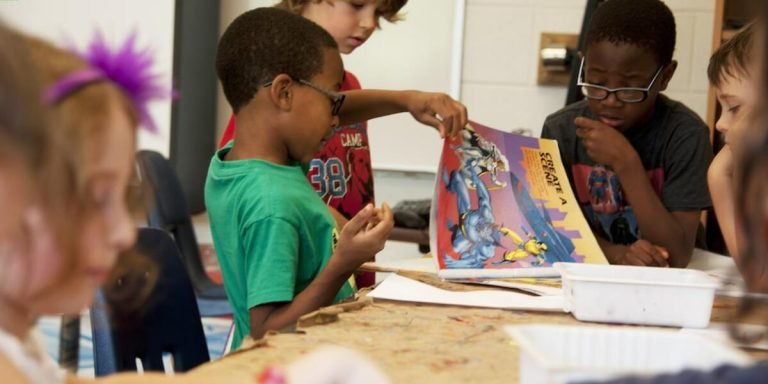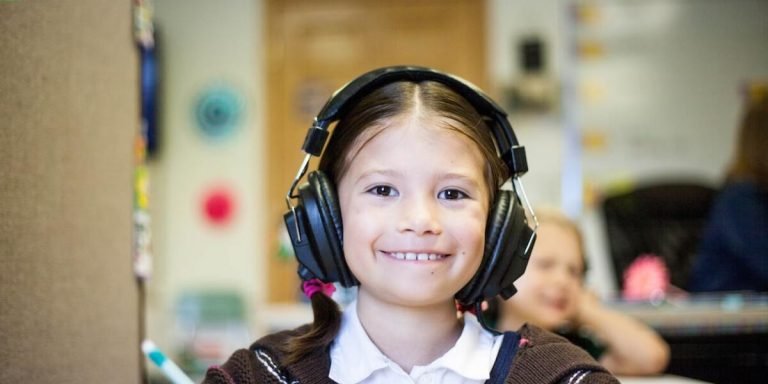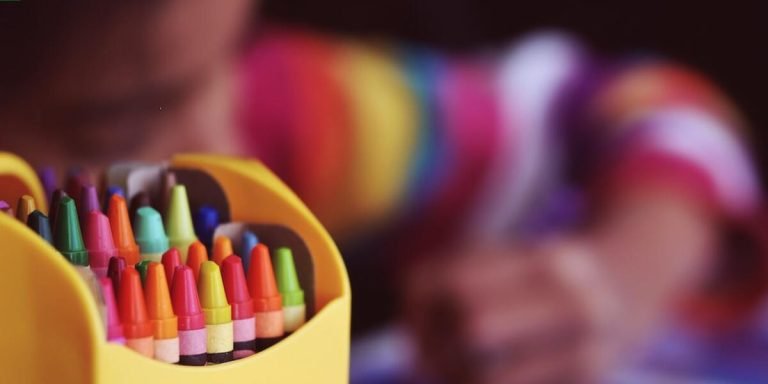3rd Grade Curriculum: Navigating Your Child’s Educational Journey
Understanding your child’s 3rd grade curriculum can be overwhelming for many parents. As children transition from learning the fundamentals in primary years towards more complex subjects, their educational journey undergoes a significant transformation. Knowing what to expect and how to support them makes all the difference – hence it is essential that you unravel this part of elementary school education.
In third grade, not only does academic intensity increase but also kids start developing critical thinking skills. This blog aims to give you insights about various aspects of the 3rd-grade curriculum including literacy, mathematics, science & social studies — providing guidance on helping your child navigate through these fundamental stages confidently.
Did you know?
Did you know that the average 3rd grader will learn to read approximately 1500 new words, greatly enhancing their reading comprehension and literacy skills?
Understanding the Core Components of a 3rd Grade Curriculum
In today’s educational landscape, understanding the core components of a 3rd grade curriculum is vital for parents and educators alike. The focal point here lies in recognizing that an effective third-grade curriculum extends beyond mere academics. It places emphasis on fostering cognitive development, social skills, creative abilities, and emotional growth among students; all crucial elements to shape well-rounded individuals ready to embrace future challenges.
Within this grade level, there’s a clear shift from learning-to-read towards reading-to-learn as literacy becomes the basis for knowledge acquisition across different subjects. Students start exploring more complex texts with comprehension forming the foundation stone leading them through lessons about history, science or math concepts like multiplication & division – essentially paving their way into real-world problem-solving situations.
Everyday classroom activities seamlessly integrate critical thinking opportunities within this education phase. These stimulate intellectual curiosity and help develop essential life skills, including subject matter exploration, enquiry-based discussions, and analytical reasoning. Comprehensive curricula at this stage aim to equip students to navigate life effectively both inside and outside academic settings.
In sync with technological advancements, digital literacy has become a key component of 2023’s 3rd grade curriculum, harmonizing our learners’ journey with evolving times.
Exploring Key Subjects: Math, Science, and Reading Fundamentals
In 2023, the core of a successful 3rd grade curriculum revolves around three main subjects: Math, Science and Reading. A deep dive into these disciplines presents an enlightening roadmap for parents looking to understand what their child’s semester might look like.
Mathematics in third-grade takes a step beyond basic addition and subtraction. Now students start getting acquainted with multiplication tables, division concepts along with fractions. Activities often revolve around everyday situations that help children apply mathematical concepts practically.
For example, using money or measurement units during class activities can make abstract math more tangible.
Science is another pillar of the 3rd Grade Curriculum where learning goes beyond mere facts memorization; it becomes exploratory! Students are encouraged to ask questions about the world around them – Why do leaves change color? How does rainfall occur?
These queries lead to experiments making science an exciting hands-on experience thereby stimulating curiosity and encouraging better engagement.
Reading is equally significant at this stage as kids transition from ‘learning-to-read’ towards ‘reading-to-learn.’ Children explore various genres such as fiction, non-fiction including biographies which broadens their knowledge base while enhancing vocabulary skills simultaneously. They also learn new strategies that aid in understanding complex texts comprehensively–for instance learning how context clues work or recognizing plot structures through story sequencing exercises.
Overall observing these fundamentals across essential subject areas gives you insight into your child’s academic journey within their elementary school education years – keeping them on track whilst nurturing lifelong learners out of our young scholars.
Assessing Common Educational Standards and Benchmarks
Navigating through the world of a 3rd grade curriculum can often feel daunting. However, understanding common educational standards and benchmarks will provide you with an idea of what your child should be learning during this crucial year.
To start, it’s important to remember that each state has its own set guidelines for curriculums. But there are some aspects which remain consistent across most states’ third-grade education system in 2023 due to implementation of ‘Common Core State Standards Initiative’. This initiative focuses on ensuring children nationwide meet certain academic standings by the end their schooling years, regardless of where they live or study.
A significant part of any 3rd grade curriculum involves developing strong reading skills. By now students ought to have grasped phonics and fluency basics; henceforward emphasis lies mainly upon comprehending complex texts in depth – both fiction and non-fiction genres alike. They’ll learn how authors use reasons and evidence while supporting points within text so as further enhancing their critical thinking abilities.
The mathematics component is equally crucial at this stage, aimed at teaching kids about fractions primarily concerning unit fractions (those having numerator one). Simultaneously also delving deeper into other areas like measurement & data interpretation along multiplication & division fundamentals too!
Moving onto sciences: here we witness more hands-on experiments allowing youngsters engage actively plus learn basic scientific concepts. The aim is instilling curiosity towards natural phenomenon besides fostering logical reasoning aptitude based from observed facts rather than assumptions or guesses alone.
Integrating Technology into 3rd Grade Learning Environments
In a rapidly evolving digital world, integrating technology into 3rd grade learning environments can offer countless opportunities for innovation in childhood education. The incorporation of tech-savvy tools not only enhances the overall educational experience but also prepares our youngsters for today’s digitally dominated society.
One practical approach to this integration involves using interactive whiteboards or tablets during lesson delivery. This helps students visualize complex concepts easily and facilitates active participation even from typically shy individuals who may hesitate to speak up in traditional classroom settings.
However, it is essential we strike a balance between fostering technological proficiency and ensuring fundamental skills are adequately nurtured. Therefore, while introducing coding courses as part of the 3rd-grade curriculum could spark early interest in STEM fields; reading comprehension exercises should still be integral parts of lessons to promote linguistic capabilities.
Lastly, remember that although technology plays a significant role in modern education, its use must be guided by pedagogical principles rather than being led by trends alone. Its purpose remains assisting teachers providing an enriching learning process catering comprehensively to young learners’ needs at their crucial development stage—nurturing curiosity, creativity and critical thinking within them—all elements necessary thrive successfully both within elementary school walls and beyond!
Utilizing Digital Tools for Enhanced Comprehension in Core Subjects
For starters, by utilizing interactive digital platforms for math learning like Prodigy or Khan Academy Kids, children can engage with complex mathematical concepts visually. This assists them to better understand abstract ideas through engaging activities and games instead of mere number crunching.
Digital storytelling tools can also enhance literary skills within your child’s third-grade curriculum. Online programs such as Storybird allow students to create their own narratives using a wide array of visuals provided on the platform itself – an approach that fosters creative thinking and improves writing fluency over time.
Incorporating virtual experiments in science classes is another way technology transforms education at this level immensely. Websites like MysteryScience offer a wealth of easy-to-understand lessons featuring hands-on projects making science more accessible than ever before!
Finally- don’t forget about educational apps! They provide countless resources right at your fingertips which makes balancing fun with study easier than ever before.
All these strategies not only make academic content more compelling but also foster tech-savviness among youngsters facilitating successful navigation later within digitally rich environments prevalent today.
Encouraging Interactive Learning Through Educational Software
Engaging children in the learning process is an essential part of education. Integrating technology into a 3rd grade curriculum can prove to be beneficial, especially through the use of educational software.
Educational software encourages interactive learning and helps make complex concepts more understandable for young minds. In this digital age, pupils are naturally inclined towards gadgets and online platforms which makes such tools highly effective.
One way to integrate technology into a 3rd grade classroom is by introducing students to subject-specific apps or websites that supplement traditional textbooks. These could include math games that promote problem-solving skills or reading programs designed with engaging content suitable for their level. Such resources help reinforce what they learn at school while making it fun at the same time.
Creating virtual projects using these applications also promotes creativity among learners besides strengthening their understanding of various subjects.
Another great tool within electronic usage involves multimedia presentations which can effectively break down information consummately suited for third graders capabilities . Animated videos provide visual explanations on science topics like lifecycles or historical events – proving far more captivating than orthodox teaching methods .
Cultivating Critical Thinking Skills in Third Graders
Critical thinking is an essential life skill that goes beyond the confines of a classroom. It’s particularly pertinent in today’s rapidly evolving world, where children need to be able to adapt and innovate continually. In this context, cultivating critical thinking skills forms a significant portion of any 3rd grade curriculum.
The process begins with making young students understand what exactly constitutes ‘critical thinking’. At its core, it involves analyzing various pieces of information or situations objectively before forming judgments. In the realm of elementary school education, teaching critical thinking starts small – by encouraging curiosity and fostering a love for learning new things every day.
Children at this stage are naturally curious; they’re always eager to explore their surroundings and ask questions about why things happen as they do. Teachers can harness this sense-of-inquiry within the framework of third-grade curricula through problem-solving activities linked with real-life situations – triggering logical reasoning abilities progressively. This approach will instill in them not only academic knowledge but also build resilience and foster independent decision-making capabilities which would serve them well later on their educational journey.
Developing Problem-Solving Abilities Through Classroom Activities
The world is changing at a rapid pace, and the skills that our children need to navigate it successfully are evolving too. As part of their 3rd grade curriculum in 2023, an increasing emphasis has been placed on critical thinking – particularly through problem-solving activities.
One practical way educators and parents alike can cultivate these essential skills in third graders involves introducing intricate yet engaging classroom activities. Games which require strategic planning such as puzzles or logic games make for fantastic starting points. The process of finding solutions stimulates young minds to think critically, analyze different outcomes before taking actions and enhances their understanding of cause-and-effect relationships.
Introducing real-world examples into teaching sessions also promotes higher-order thinking skills among students. Educators could present scenarios from daily life – say managing finances or dealing with conflicts; then encourage your little scholars to brainstorm various possible solutions applying what they’ve learned so far during the course.
Experimentation encourages out-of-the-box reasoning abilities amongst youngsters by fostering curiosity. Group experiments like simple science projects introduce them first-hand how hypothesis testing works- assisting them develop logical thought patterns effectively while imparting important team collaboration lessons simultaneously!
Remember always encouraging questions within classrooms setting forms another powerful strategy towards developing strong problem-solving capabilities amidst kids attending elementary school education levels currently across America today! Inquiring ‘why?’ increases skill sets related challenging prevailing notions thereby nurturing uninhibited creative innovators future societies will be proud about tomorrow onwards hereafter!
Fostering Creativity and Innovation with Project-Based Assignments
Project-based assignments make an essential part of 3rd grade curriculum due to their potential in fostering creativity and innovation. They offer third graders the opportunity to engage with subjects creatively, boosting critical thinking skills while also nurturing a natural curiosity about the world.
These assignments aren’t merely busywork; they’re opportunities for experiential learning that complement traditional teaching methods used in elementary school education. Students get hands-on experience working on individual projects or as teams, lending them an understanding far deeper than textbook facts.
Encourage your kids not just to complete these project-based tasks but think beyond the guidelines. Set challenges related to missions like collecting information about local flora and fauna or creating simple devices using household items such as making a homemade compass. This enables students to explore creative solutions intrinsic within scientific thinking broadening knowledge spectrum at this stage of their educational journey.
Adopting unconventional tools can further elevate creativity levels during these projects significantly influencing youngster’s cognitive abilities from early stages itself.
Usage of interactive online programs developed specifically focusing upon bridging fun elements into studies and employing home-made crafts teaches problem-solving tactics bringing out inherent ingenuity amongst students effectively achieving desirable results convincingly echoing developing critical mindsets crucial for young minds development process ahead!
Conclusion
So, there you have it – the invaluable roadmap to your child’s 3rd grade curriculum. As thrilling as this journey can appear, with its share of lessons and adventures in both academics and life skills, just remember that being involved is key. You’re not merely spectators on this voyage but active participants guiding their path towards discovery.
Now feel free to sail around our website for more such compasses aimed at educating children. From insightful articles catering to a variety of age groups to resources offering support for parents and educators alike, we’ve got everything covered under the educational sun! Happy exploring!







